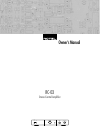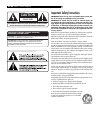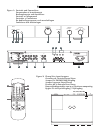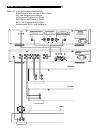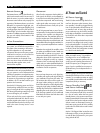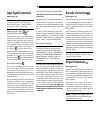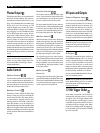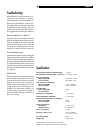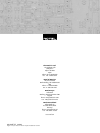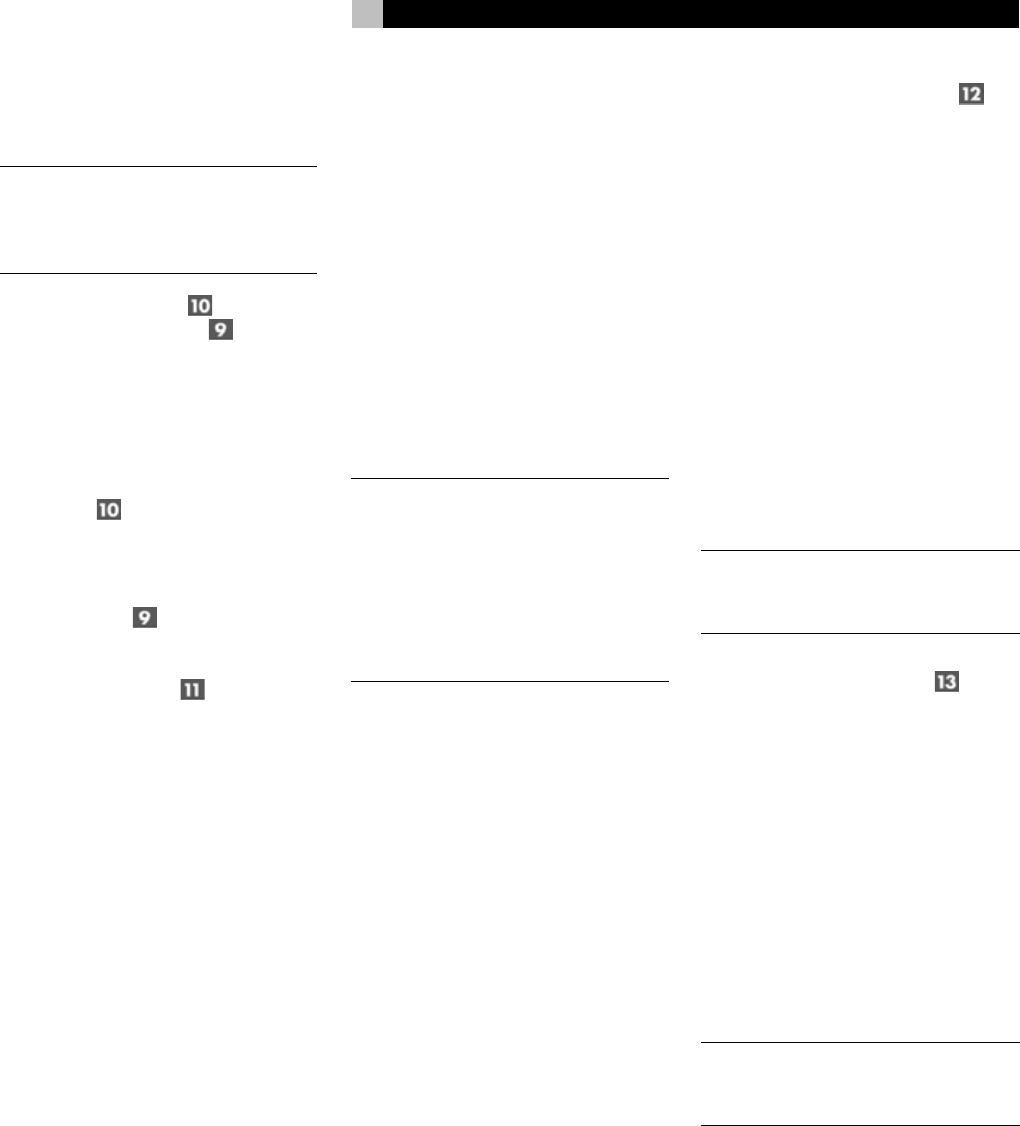
7
English
Input Signal Connections
[See Figure 3.]
NOTE: To prevent loud noises that neither
you nor your speakers will appreciate,
make sure the system is turned off when
you make any signal connections.
Phono/Line Input and
Ground Connection
The Phono/Line input is set at the factory to
operate as a phono input. If you will not be
using the phono input, this input can be con-
vert it to a standard line level input. See the
“Converting the Phono/Line Input section of
this manual. The following information cov-
ers using the
input as a phono input.
Plug the cable from the turntable into the ap-
propriate left and right phono inputs. If the
turntable has a “ground” wire connect it to
the screw terminal
to the left of the Phono
inputs. It will help prevent hum and noise.
Line Level Inputs
The CD, Tuner, and Aux inputs of the RC-03
are “line level” inputs. These are for connecting
components such as CD players, Hi Fi or
NICAM Stereo video cassette recorders, tuners,
Laser Disc players or the analog output from
a CD ROM drive.
The Left and Right channels are labeled and
should be connected to the corresponding
channels of the source component. The Left
connectors are white, the Right connectors are
red. Use high quality RCA cables for connect-
ing input source components to the RC-03.
Ask your authorized Rotel dealer for advice
about cables.
Phono/Line Input Conversion
[See Figure 2 for conversion jumper
locations.]
The Phono/Line input set configured at the fac-
tory for phono input operation. If you do not
use the phono input and need another line level
input, this input can be converted to a line level
input.
In order to convert the input for line level us-
age, four “jumper” connectors inside the RC-03
must be moved from one set of pins to another.
This task should be done by a qualified tech-
nician. See your authorized Rotel dealer.
Resetting Jumpers
Before opening the RC-03 cabinet to reset
the jumpers, the power cord must be un-
plugged from the wall. DO NOT OPEN
THE CABINET OF THE RC-03 BEFORE THE
POWER CORD HAS BEEN UNPLUGGED
FROM THE WALL. FAILURE TO DO SO
WILL EXPOSE YOU TO HAZARDOUS
VOLTAGES.
After the power cord has been unplugged, re-
move the screws that hold the cabinet cover
in place and slide the cover off. Locate the four
jumper pin blocks near the Phono/Line input
labeled SW1, SW2, SW3 and SW4. The fac-
tory standard (phono) position of the jump-
ers is on pins 2 and 3 of each block. To con-
vert the RC-03 Phono/Line input to a line type
input move all four jumpers so they are on pins
1 and 2 of each jumper pin block. Replace
the cover of the cabinet. Do not plug the
RC-03 power cord back into the wall
outlet until the cabinet cover has been
replaced.
Recorder Connections
[See Figure 3.]
The Tape inputs and outputs can be connected
to any record/playback device that accepts
standard line level analog input and output
signals. Typically that will be a conventional
tape recorder.
When connecting a recorder to the RC-03 re-
member that the outputs of the recorder must
be connected to the tape inputs of the RC-03.
Similarly the tape outputs of the RC-03 must
be connected to the inputs of the recorder. As
with other sources be sure to connect the Left
and Right channels of each device to the proper
channels on the associated components. Use
high quality connecting cables to prevent loss
of sound quality.
NOTE: The Tape Outputs are not affected
by the Volume or Balance controls. They re-
ceive a fixed level signal.
Output Connections
[See Figure 3.]
The RC-03 has RCA-type output connectors
that are compatible with the inputs of most
power amplifiers. Use high quality cables and
be sure to connect the Left and Right channel
outputs of the RC-03 to the correct channels
of the amplifier.
There are two sets of outputs on the RC-03.
The second set of outputs may be used in
custom system configurations to drive a sec-
ond power amplifier or to supply a signal to
a special signal processor.
NOTE: Changes to the settings of the Vol-
ume and Balance controls affect the signal
from the Preamp Outputs.



